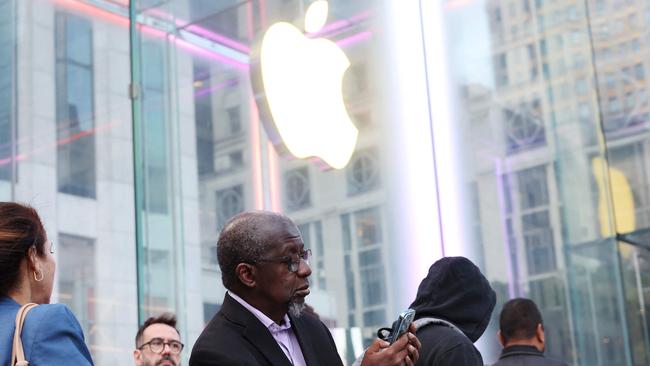A tried-and-true investing pattern has lost its shape
Deciding which sectors and companies are cyclical versus defensive has suddenly gotten a lot more complicated.

One of the biggest simplifications in markets is to buy cyclical sectors when the economy’s booming, and defensives in a slowdown. It’s obvious — until you try to decide what’s cyclical and what’s defensive.
The recent prospect of Federal Reserve rate cuts, inflation-free growth and Chinese stimulus prompted a strong cyclical rally on Wall Street. Or they did on some measures. On others, the picture is confused.
Technology stocks have messed up some of the basic measures, the boom in electricity demand has given boringly-safe utilities a growth tinge and war confuses everything.
When it works, utilities, consumer staples such as food retailers, and healthcare are defensive sectors, sure of steady sales even when the economy slows.
Consumer-discretionary companies (such as carmakers), banks, industrials, materials and tech were cyclicals, with their performance more closely linked to the economy. It worked pretty well on Friday when far stronger-than-expected jobs numbers blew up the idea of a slowing economy: Financials and discretionary leapt, while utilities fell and healthcare and staples lagged behind.
But the certainties are gone. Giant cash-rich tech stocks have marched to a different beat for years as their growth prospects trampled any barriers economic weakness might present.
The artificial-intelligence boom boosted the “Magnificent Seven” stocks — Amazon, Alphabet, Apple, Meta, Microsoft, Nvidia and Tesla — to such a size that they came to dominate sectors including consumer discretionary and communication services, spreading the tech confusion.
Even industrials aren’t a perfect way to play the economic cycle. On Friday they underperformed the S&P because the strong economy wiped out hopes of another double-size rate cut from the Fed. This, in turn, means higher mortgage rates and less chance of a house-building boom. Six out of the seven building-products suppliers in the S&P 500 industrials sector fell, and strong performance from airlines and some other groups only just offset them.
Both the problem and one solution are clear in consumer-facing stocks.

The S&P 500 consumer-staples sector is ahead of consumer discretionary this year, usually a sign that the economy is weakening and that bond yields are down. In fact, the economy ran stronger in the third quarter than the Fed thinks is sustainable in the long run, according to the Atlanta Fed’s GDPNow estimate, and 10-year bond yields are close to where they ended December.
Consumer staples did well in large part because the three biggest stocks in the sector, Walmart, Procter & Gamble and Costco, rocketed up. So far, so supportive of the thesis: when worried, buy defensives.
But Wall Street’s discretionary sector did less well in large part because Tesla, the second-largest in the sector after Amazon, is down for the year.
We can reduce the effect of sectors being dominated by particular stocks by looking at equal-weight versions, which treat all members equally. Do this, and discretionary handily beat staples, exactly what the fast-growing economy would predict.
Unfortunately, equal-weighting doesn’t solve all the issues. Utilities have become an AI play thanks to the surge in demand for power for data centres. This makes them less useful as a gauge of investor demand for safety (although on Friday they fell as bond yields rose, as should be expected).
Energy stocks are treated as defensive by MSCI in its indexes because high oil prices — and so oil stocks — were often the cause of recessions, making it look like energy initially resisted the slowdown. I prefer to look at the obvious link between faster economic growth and demand for oil and treat energy as a cyclical sector.
But it’s also sensitive to Middle East tensions and OPEC politics, which interfere with its link to global growth. Energy stocks have been the standout performer of the past week as Israel’s invasion of Lebanon and Iran’s bombardment of Israel raised the prospect of military disruption of oil production.
Banks and other financial stocks can also be tricky. In serious recessions they suffer as borrowers default. At other times, they are sensitive to the shape of the yield curve, or how much higher or lower long-dated bond yields are compared with overnight interest rates.
Usually the inverted curves that are bad for banks are also a harbinger of recession. But investors are betting this time is different, and the past two years of inverted curves don’t signal trouble.

Strip out energy, financials and tech and equal-weight each sector, and cyclicals have indeed been on a tear, beating defensives by about 6% over the past four weeks, the most in such a short period since the bubble of early 2021. That fits with the economic data coming in stronger and the Fed cutting rates into a decent economy.
Yet, so much fiddling with the figures makes me queasy. The simple market-value weighted indexes of cyclicals and defensives show a much smaller rise, nowhere near as big as the tech-fuelled leap of the summer — but that was obviously about AI much more than the economy.
Goldman Sachs tries to measure cyclical performance by looking at each stock’s sensitivity to its estimate of economic growth, ignoring sectors. Again, cyclicals performed strongly in the summer, as AI pushed up tech. There’s no perfect gauge.
Investors who want to take a defensive stance can still buy consumer staples or simply cut back on stocks in favour of Treasurys. Meanwhile bulls can delve below sectors to buy sellers of true discretionary products such as travel and tourism, gambling or luxury goods. But the cross-currents from tech and war make it foolish to rely on sectors to follow their traditional cyclical and defensive patterns in coming months.
The Wall Street Journal





To join the conversation, please log in. Don't have an account? Register
Join the conversation, you are commenting as Logout